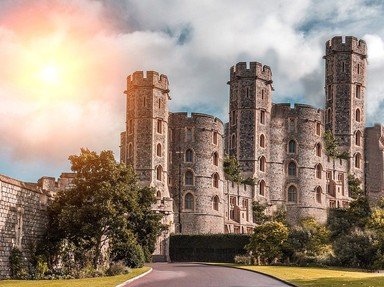Quiz Answer Key and Fun Facts
1. Château d'Amboise was built atop a promontory, on the foundations of an old fortress, and was seized by King Charles II in the 1400s. Years later, another French king, Charles VIII, met his death at the château in what unusual way?
2. Château d'Angers was built as a defensive castle in a strategic location in France to help protect the family Anjou from the Normans. It is home to what famous tapestry that depicts a story from the "Book of Revelation"?
3. Château de Chambord is a popular tourist site in the Loire River Valley that draws people from around the world to see an incredible staircase that some say was designed by da Vinci himself. What is so fascinating about Chambord's staircase?
4. Château de Chantilly is comprised of two different buildings that are attached to each other, the Petit Château and the Grand Château. The Grand Château had to be rebuilt after being destroyed during what conflict in France?
5. Château de Chenonceau, one of the most well-known castles in the Loire River Valley, is located on the Cher River, and underwent a major renovation and reconstruction in the 1500s. What is so unique about this particular château?
6. Château de Fontainebleau is one of the largest royal castles in France, located approximately 34 miles (55 kilometers) southeast of Paris. While the palace contains the apartments of Emperor Napoleon, it was originally constructed long before he took control of France, during what time period?
7. Château Gaillard was built by Richard the Lionheart, King of England and Duke of Normandy. It lays in ruin in Normandy, France, overlooking the River Seine, and has the distinction of once being used as what?
8. Palais des Papes, or Papal Palace, was a papal residence and the seat of Western Christianity from 1309 to 1376. The château is located in which city in southern France?
9. Château de Roquetaillade, located in Mazeres, France, dates back to the fourteenth century, and was renovated in the nineteenth century by Eugène Viollet le Duc. What is the meaning of the castle's name, "Roquetaillade"?
10. Château de Versailles, or the Palace of Versailles, was once a hunting pavilion before becoming the main residence of the French royal family prior to the French Revolution. Which King of France expanded the palace and was the first to hold court there?
Source: Author
kaddarsgirl
This quiz was reviewed by FunTrivia editor
trident before going online.
Any errors found in FunTrivia content are routinely corrected through our feedback system.
